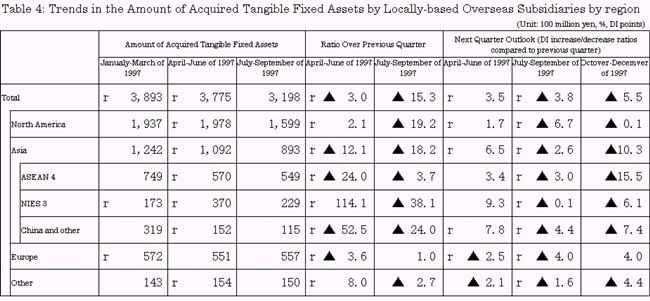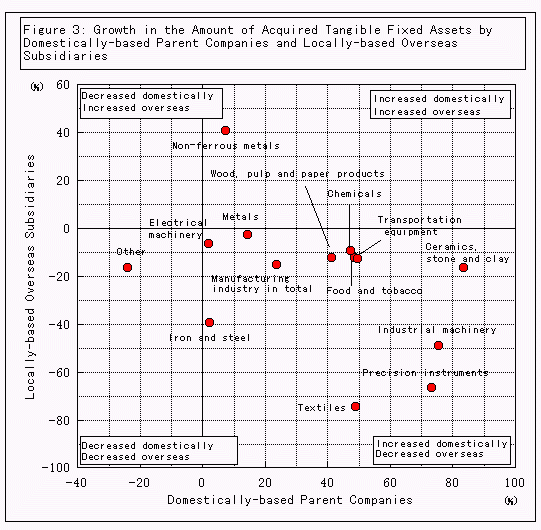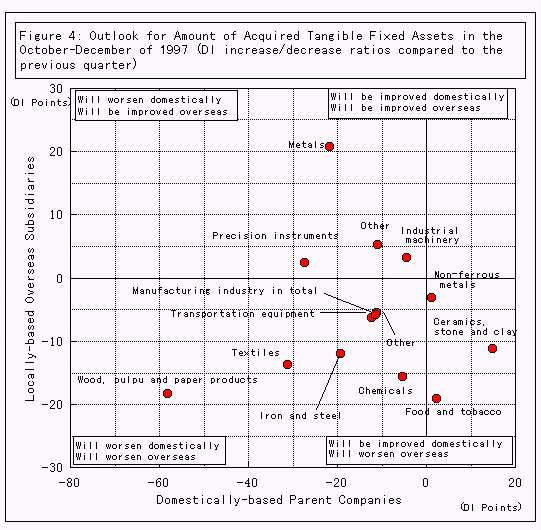Quarterly Survey of Overseas Subsidiaries
2. Facility Investment


The total facility investment amount registered by domestically-based parent companies soared significantly by 23.7% over the previous quarter, amounting to 1.7571 trillion yen. By business category, all the categories registered increases, excluding the "other" category.
On the other hand, the total amount of the direct overseas facility investment made by domestically-based parent companies decreased to 304.5 billion yen, a decline of 13.4% compared to the previous quarter. By category, the investment amount decreased in eight categories such as chemicals and transportation equipment.
The total amount of facility investment by locally-based overseas subsidiaries also decreased noticeably, a 15.3% compared to the previous quarter.
By category, all the business categories suffered decreases, apart from non-ferrous metals. Declines were especially noticeable in the categories of transportation equipment, textiles and industrial machinery. By region, the decreased facility investment was witnessed in all the regions in the world, with the exception of Europe.
Incidentally, the overseas facility investment ratio (Note 4) was 18.2%, a decline of 8.4% compared to the previous quarter.
Looking at the next October-December quarter forecast on the predictable business performances of domestically-based parent companies, acquisition of tangible fixed assets showed a DI index of 6.6 points (a decline of 11.2 points compared to the previous quarter) and the outlook worsened in ten business categories in comparison with the previous quarter. Likewise, the outlook for the next quarter outcome indicated a DI index of 0.3 points (minus 2.2 points compared to the previous quarter) and the forecast deteriorated in eight business categories.
The outlook for the October-December quarter facility investment performance by locally-based overseas subsidiaries showed a DI index of 16.7 points on a combined region basis, which was a worsened prediction by minus 5.5 points compared to the previous quarter.
By region, it was forecast that DI indices would worsen in all regions excluding Europe.


